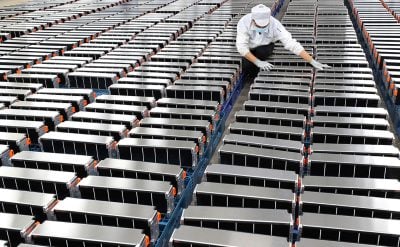When we asked a street-side vendor, overseeing his modest collection of newspapers and magazines, when he expected the latest editions of our publications, he whipped out a mobile phone, punched some numbers and moments later told us, “You will find them here in two days”.
Everyone in Kenya, at least so it seems, has a mobile phone. There are over 20 million of them knocking about all over the country. On our way to view Kenya’s geo-thermal power generation facilities on the floor of the Rift Valley at Naivasha, we stopped to ask directions from a dusty goatherd. He didn’t know but his cousin would; out came the mobile and we were on our way.
But mobiles are old hat in Kenya. The internet is the in-thing now. Internet connection has gone up from being available to 2 million people to 12.5 million in less than two years. Access is mainly through the mobile phone. Kenyans have become masters at using their mobiles for virtually all transactions, reading papers and blogs, checking on prices of commodities and shares, and watching all kinds of entertainment including films and football matches. “If you want to see a Kenyan spinning around in a daze, take away his mobile!” joked our driver Martin Mwiti.
Intense competition from service providers such as Safaricom and Airtel has been driving prices down; and handsets, including smartphones, are becoming cheaper. You can pick up the latest Samsung for less than $100. Three undersea cables – a fourth one is on the way – have made the expensive satellite system virtually obsolete and brought broadband within the reach of everyone. But Kenyans are not merely consumers of IT technology. They have become experts at producing highly innovative software to suit the particular needs of their environment.
Safaricom is credited with starting the trend with its M-Pesa mobile banking system. The mobile phone has now become a “digital wallet” in the true sense of the word. The World Bank estimates that financial transactions made using the system top $7bn. Other systems allow you to track national budget expenditure – how much has been allocated to your district or town, for what purposes and the latest state of play.
To say the technology has revolutionised society is an understatement. It has delivered knowledge and therefore power to the people. The Ushahidi data-mapping platform which collated images and reports from the ground during the post-election violence and transmitted them in real time via social media and text messaging, has taken the world by storm. Time magazine says: “By May of this year, Ushahidi, which is free to download, has been used 14,000 times in 128 countries to map everything from last year’s earthquake in Haiti to this year’s Japanese tsunami.”
Kenya has become such a hotbed of young IT techies and other inventors that it has earned the title of Silicon Savanna. Incubators such as iHub and the University of Nairobi’s FabLab are generating exciting and practical applications and inventions almost by the week. Cloud computing is enabling the often small-sized entrepreneurs to build their apps, and Google has located its lead sub-Saharan base in Kenya.
Kenyan organisations and individuals are picking up international awards almost as a matter of course. Simba Technologies beat a field of 100 from East Africa to win the inaugural Pivot25 award for designing an app that will provide basic health care information to remote locations; last year John Waibochi gained $1m in funding for winning the Nokia Global Growth Economy Venture Challenge for his mobile-based supply chain solution app.
But this is just the beginning of what promises to be a giant leap forward for Kenya’s ICT sector. Bitange Ndemo, Permanent Secretary of the Ministry of Information and Communications showed us around a scale model of his pride and joy: the new $7-$10bn Konza Technology City, to be built 60km from Nairobi. He expects construction to begin later this year.
He is taking on Bangalore. “Why not?” he asks. “This will be a completely greenfield site with all the most modern technology you can wish for. Rents will be low – for example, one acre of land in Upper Hill (a fast-growing suburb of Nairobi) will set you back $4m; at Konza, one acre comes in at around $2,000.”
The 5,000 acre Konza City will house a science and technology park, an IT park, incubators, a couple of state-of-the-art medical centres, a media city, a financial district, a convention and conference centre that can seat 20,000, a 40,000 sq metre Expo centre, a shopping mall, residential units, a stadium, a golf course and an artificial river. The city will have its own sewage treatment and water recycling plant. “We want to give our techies, and others from around the world, all the facilities and room to go mad in,” he says.
“A high-speed rail link will mean you can be in Nairobi in 20 minutes,” he adds. He wants the stadium to host international sporting events, along the lines of the IPL cricket tournament in India.
“English Premier League clubs, or even the world’s best clubs could hold tournaments here during their off-season; we could stage athletics invitation events, cricket championships, you name it.” The city will be a stone’s throw away from the country’s fabulous Amboseli and Tsavo national parks, so visitors can “indulge themselves in technology, get treated at what will be some of the world’s best hospitals, watch world sports stars in action and enjoy this country’s wonderful wildlife and culture.”
The project will be constructed in phases and completed in five years. Ndemo says interest in taking up space has been intense. Several medium-sized Indian firms have been banging at the door and two giant Indian medical providers have been battling for the medical facilities.
Meanwhile, he wants to finish the country’s complete migration from analogue to digital broadcasting by the middle of next year. This, he says, will be a first in Africa and create vastly more space for new TV and radio channels. Two more private sector multiplex towers, each with several towers, will be added to the single- state one currently in use. There are around 3.5m TV sets in use at the moment but the numbers are increasing by the week. As it is, viewers have a choice of hundreds of channels to pick from, including dozens of local ones.
“You have to agree that Africa’s Silicon Savanna is a force to reckon with,” says Ndemo. Who can argue with that?
Want to continue reading? Subscribe today.
You've read all your free articles for this month! Subscribe now to enjoy full access to our content.
Digital Monthly
£8.00 / month
Receive full unlimited access to our articles, opinions, podcasts and more.
Digital Yearly
£70.00 / year
Our best value offer - save £26 and gain access to all of our digital content for an entire year!
 Sign in with Google
Sign in with Google 


